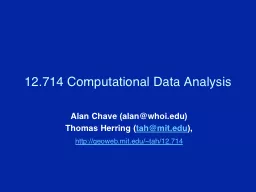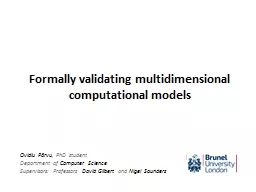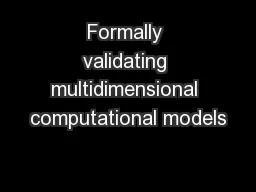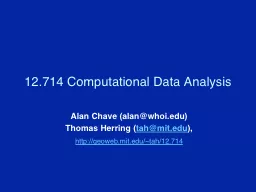PPT-12.714 Computational Data Analysis
Author : keywordsgucci | Published Date : 2020-08-27
Alan Chave alanwhoiedu Thomas Herring tahmitedu httpgeowebmitedutah12714 05162012 12714 Sec 2 L10 2 Today s class Asymptotic distribution of lag window estimators
Presentation Embed Code
Download Presentation
Download Presentation The PPT/PDF document "12.714 Computational Data Analysis" is the property of its rightful owner. Permission is granted to download and print the materials on this website for personal, non-commercial use only, and to display it on your personal computer provided you do not modify the materials and that you retain all copyright notices contained in the materials. By downloading content from our website, you accept the terms of this agreement.
12.714 Computational Data Analysis: Transcript
Download Rules Of Document
"12.714 Computational Data Analysis"The content belongs to its owner. You may download and print it for personal use, without modification, and keep all copyright notices. By downloading, you agree to these terms.
Related Documents














